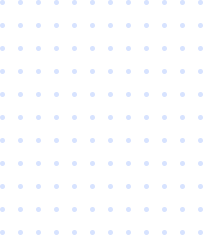
This Content is Locked

This Content is Locked
Please enter your name and your email address to unlock this content.
As mainly applied, pure and operations research mathematicians we elucidate mathematical modelling as the process of converting a real-world problem to mathematical formulation. It is the description of a system using mathematical concepts and language. This transfer process is a precondition for approaching and solving the real world problem. It incorporates the main features and characteristics of the system while leaving out less important features that have little impact on the system.
Also known as the science of better decision making, Operations Research is often considered a subfield of applied mathematics. It focuses on finding efficient solutions to operational problems and arriving at a maximum or minimum quantity keeping in mind constraints on the system. It draws on a range of methods from the fields of:
In our work, we are often faced with complex problems that can only be solved combining multiple methods. This may be a combination of different methods used in Operations Research, but may also include methods from an entirely different field altogether. For example, we often combine Predictive Analytics and operational research methods, whereby the predictive models deliver the necessary knowledge regarding how the variables of interest are connected
The term Business Analytics incorporates the areas of Business Intelligence, Predictive Analytics, and Data Mining.
Business Intelligence focusses on:
We believe confidence intervals and hypothesis tests ideally complement visualization and reporting of summary measures because they help you tell whether a difference between two groups is “real” or if it might just have happened by chance.
Predictive Analytics builds on Business Intelligence Data in order to draw valid conclusions that are crucial for business decision making. For example:
Predictive Analytics draws on a wide array of statistical, econometric and machine learning models, whereby a specific focus lies on being able to predict the effect of hypothetical scenarios as well as forecasting.
In contrast to Predictive Analytics, Data Mining focuses on pattern recognition and data reduction. Data Mining therefore also plays a role in Business Intelligence when it comes to creating meaningful indicator variables that summarize large amounts of data. This can also be useful for prediction, for example, if no “model” of reality is known. Data reduction is also an integral part of many Natural Language Processing tasks.
As datasets become very large, the normal ways of handling and processing data become inadequate. In order to process vast amounts of data, distributed systems, systems that can coordinate tens to thousands of servers easily, are key when it comes to:
Artificial Intelligence applications draw on a wide array of predictive methods from the fields of statistics, data mining, machine learning and aim to simulate human abilities. Each of these fields enhances a system’s ability to learn from experience/external data. We distinguish between three types of “learning”:
The term Software Engineering describes a process of:
Software Engineering thereby combines our technical and mathematical expertise on the one hand and our many years of project management experience on the other. Here at VIA we use a range of programming languages, which includes C++, Java, Pascal (Delphi), Python, R, SAS and JavaScript and have ample experience in developing desktop and web-based applications.


Please enter your name and your email address to unlock this content.